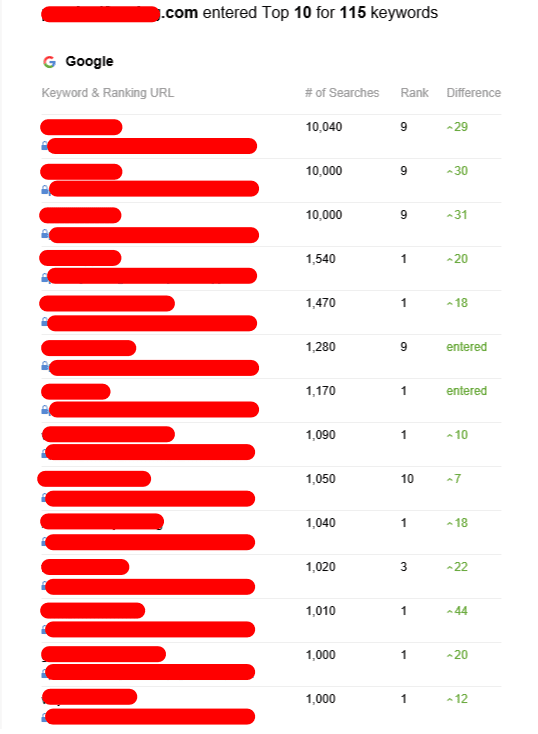Backlink Tier - The Hierarchy of Backlinks That Scale Your SEO Campaign
Backlink tier refers to the hierarchy of links you create to expand your SEO campaign. Each level provides an extra layer of protection against Google's penalties.
Tiered link building requires considerable time and effort to make sure that everything is right. Google takes weeks to discover and analyze new backlinks.
First-Tier Links
The first layer of links that lead to your particular piece of content should be of high-quality dofollow backlinks from trusted websites. These links are referred to as Tier 1 backlinks and act as the base of your link building strategy. They vouch for your web page, and give it enough domain authority to be highly ranked on search results pages. If, for what is tiered link building , your blog post was published on HubSpot and also included a tier-one link to SearchEngineLand's compilation Link Building Statistics then SearchEngineLand’s website rankings will benefit from the link equity that HubSpot gave away.
The second tier of backlinks could be a bit more varied and may include low-quality links, such as spammy forum posts or low-quality bookmark websites and directories. The main objective of Tier 2 is to create content of high-quality that links back to your first-tier backlinks. This is because quality content will enrich the article it is placed in, and not appear as a separate item for SEO purposes.
To build a successful tiered link building campaign you'll have to invest in creating high-quality content and invest in tools like RankerX or GSA. However the time and expense that is spent manually executing the tiered link building process can be worth it in terms of the higher rankings that result from having a well-organized backlink pyramid.
Second-Tier Links

Tiered link construction is designed to direct users through external websites before bringing them to your site. It's crucial to choose relevant second-tier backlinks sources that are relevant to your business and your website to ensure this happens. As opposed to profile profiles for accounts, guest blog posts perform well for this purpose because they provide useful content that people want to consume.
It is recommended to avoid using the tier-2 links on forums or other sites with poor quality. Instead, use high-quality pages of articles from industry or guest posts. These links will be more natural and will have greater impact on your search engine ranking. In addition they are more likely to be considered by Google as having passed link equity, which could boost their value in SERPs.
If you're looking to boost your SEO ranking It is important to know that acquiring these high-quality links manually isn't easy. It can take several months to pitch guest posts to top-tier publishers, and even longer for them to get published. Additionally, it may take weeks to see the results of your efforts when it comes to generating new traffic and onsite conversions.
Many SEOs utilize automated tools to build second-tier backlinks. This method may violate Google's Webmaster Guidelines and lead to a penalization.
Third-tier Links
The number of links on this level is staggering and can be considered spammy. They are shared on social media platforms and user-generated content sites like Quora. They help with the indexing of tier two links but don't give any link equity to the promoted resource. These are usually nofollow links. At this point marketers are more concerned with quantity rather than quality. They use tools to post numerous links in forums, in the comments section of articles and blog posts, in directories and in other similar locations. This is where tiered link construction is a grey area and violates Google's webmaster rules.
Tiered link-building campaigns need an immense amount of time and effort to be successful. It can take weeks or even months for Google to crawl a single backlink, and then it could take months or even weeks to see a significant SEO impact. Therefore, marketers must be patient and use a well-thought-out strategy for content.
In addition marketers should be cautious about using too many automation tools to achieve this tier of linking. These can violate the rules of search engine optimization and could lead to penalties. It is preferential to manually select links and post them on relevant websites of donors rather than using automated services like GSA or RankerX. This will stop search engines from penalizing you for poor quality links.
Fourth-Tier Links
Tiered link building continues to be an effective method for gaining more website traffic. Since Google has made significant efforts to eliminate "black-hat" SEO techniques, tiered link building techniques have been affected.
They are classified as gray-hat SEO methods and could be penalized for their use in a fraudulent manner. Tiered backlinks are backlinks constructed on different levels of a pyramid. These backlinks are used to improve a site's ranking in search engine results. The promoted web page will rank higher than its competitors and will also receive more organic traffic.
The quality of backlinks on this tier takes a step down and they are generally nofollow. In addition this tier could consist of low-quality social media profiles, directories, and article networks. Links can be generated by natural means or through strategic automation tools, however they should be diversified in terms of the domains as well as the niches and their relevance.
In addition to their low-quality, nofollow character, these backlinks could also cause problems if they are not adequately diversified. Google has a group of hound dogs that are highly trained and are always looking for patterns and strategies in backlink profiles. If they are found this could lead to sanctions not just for the link-building team, but also for the clients of Google.
